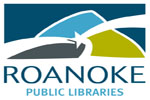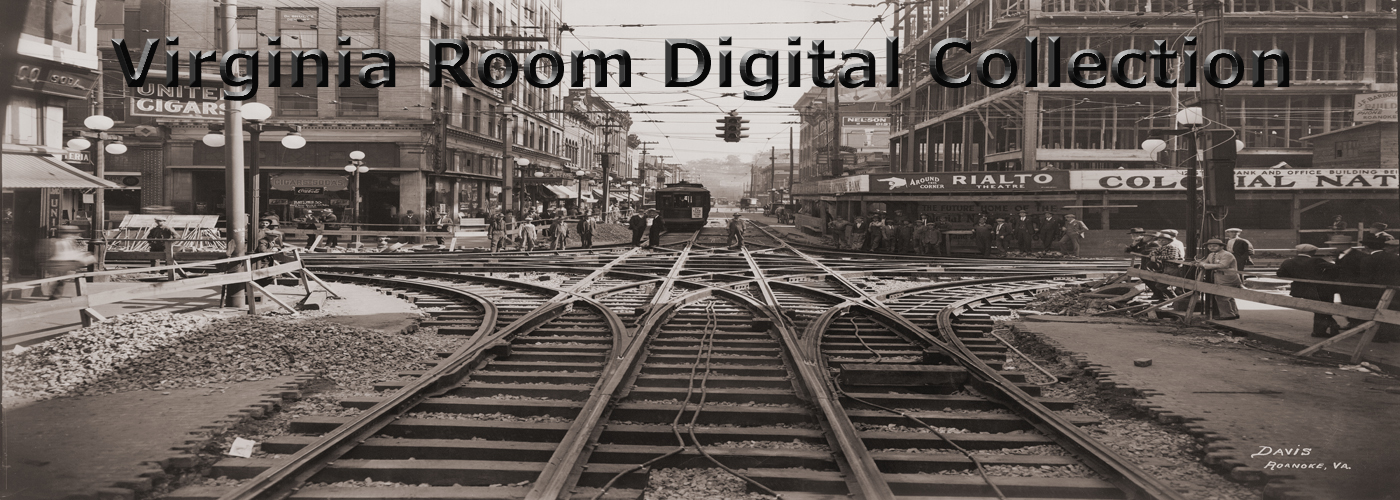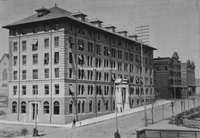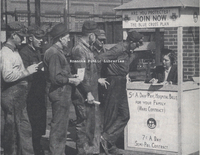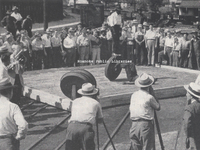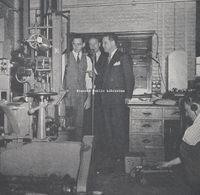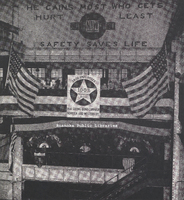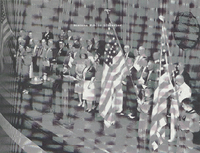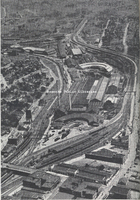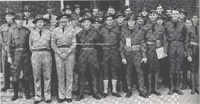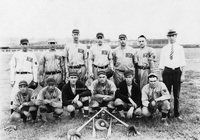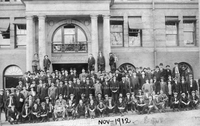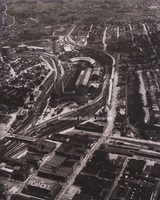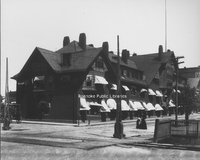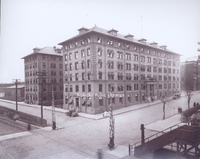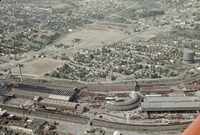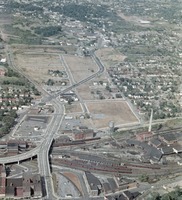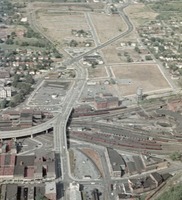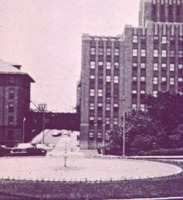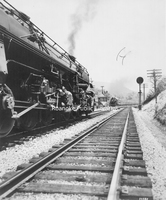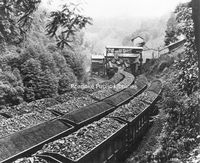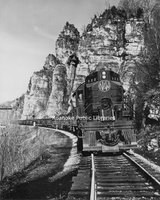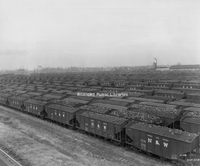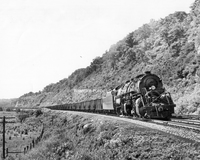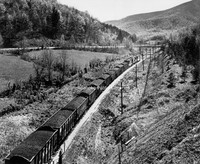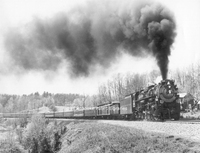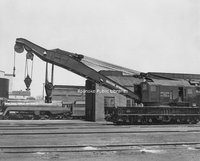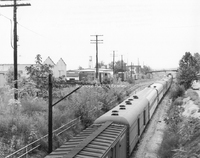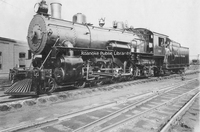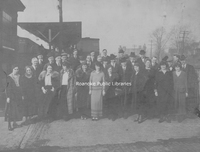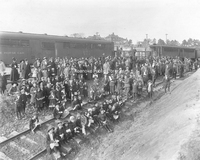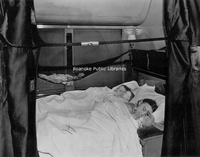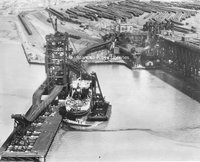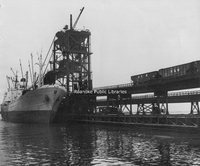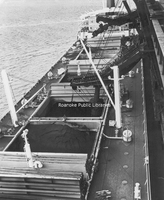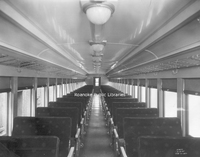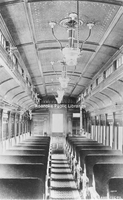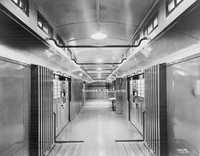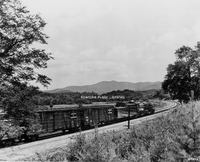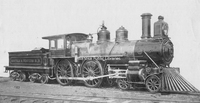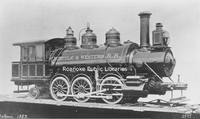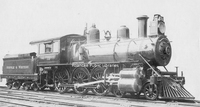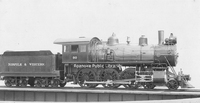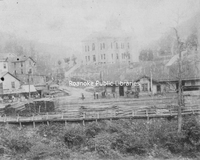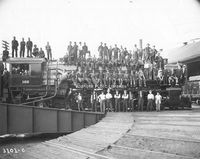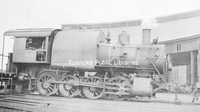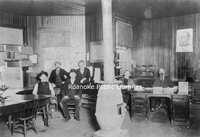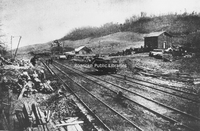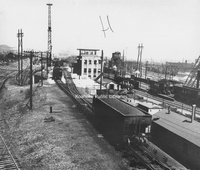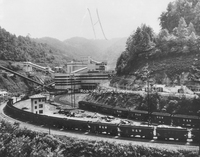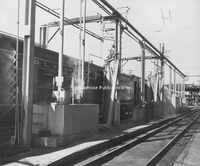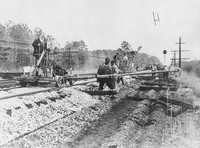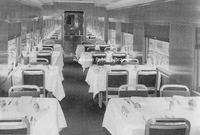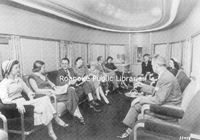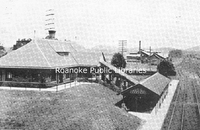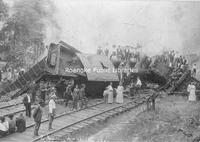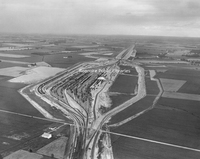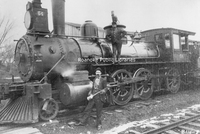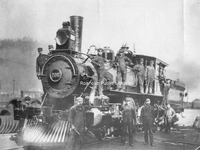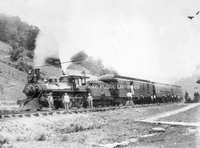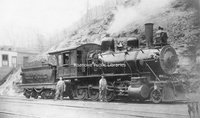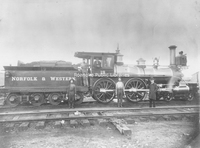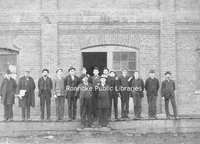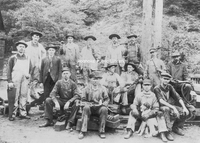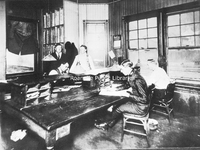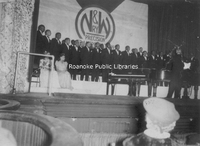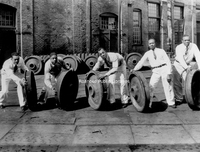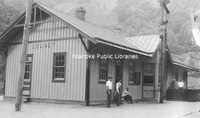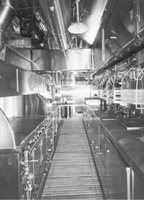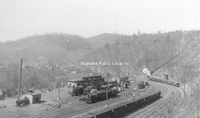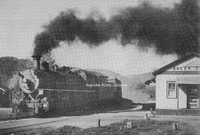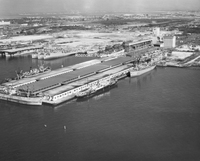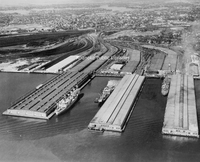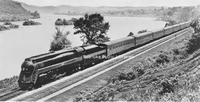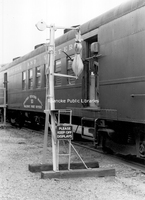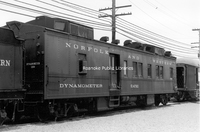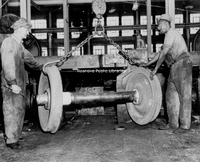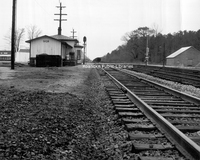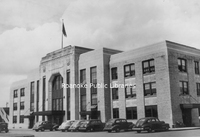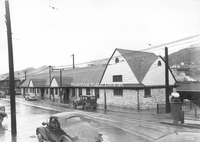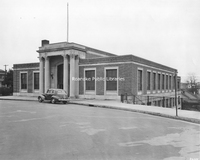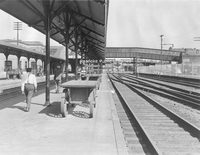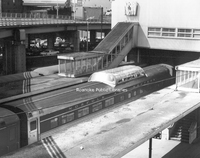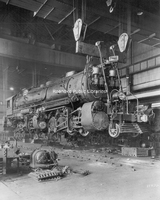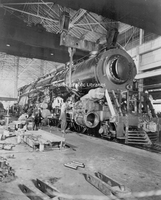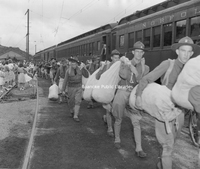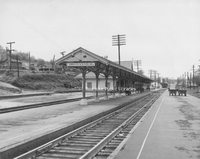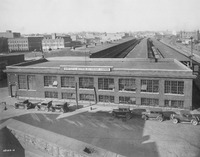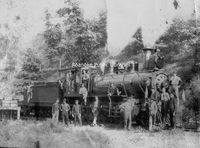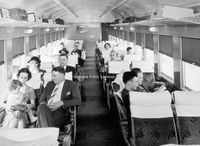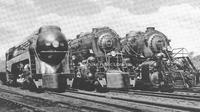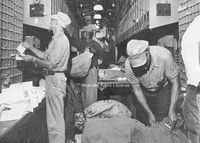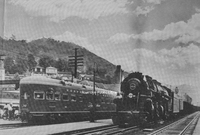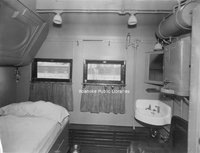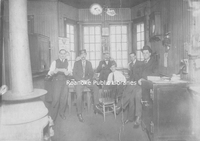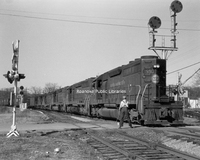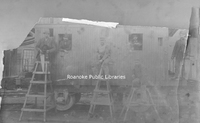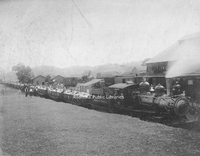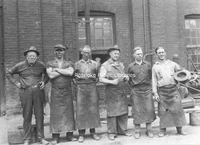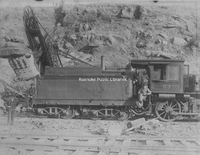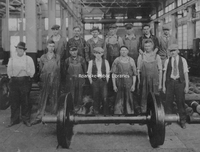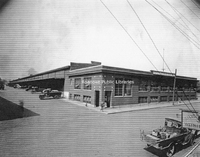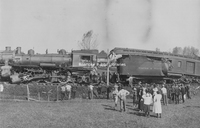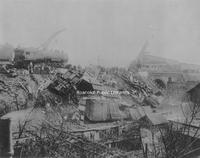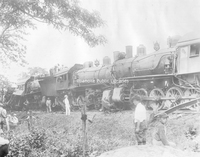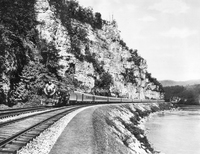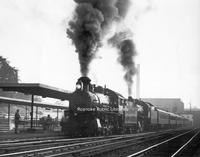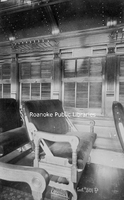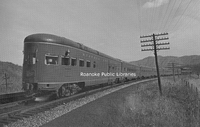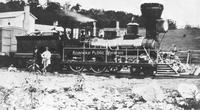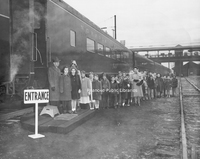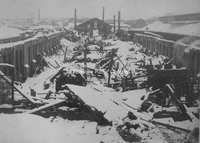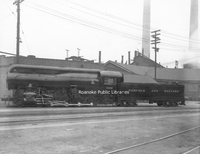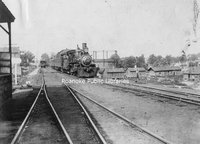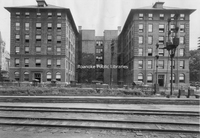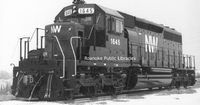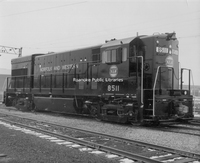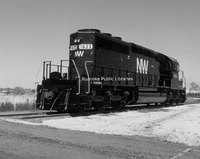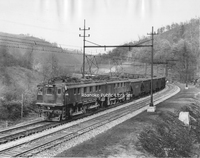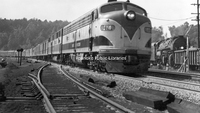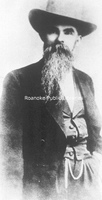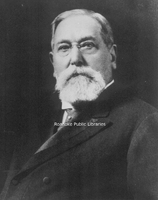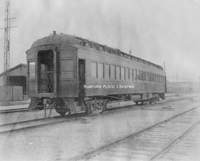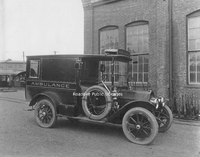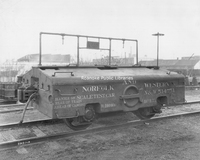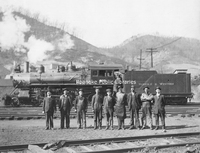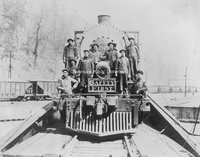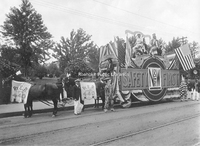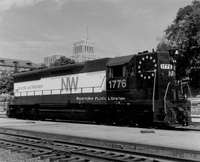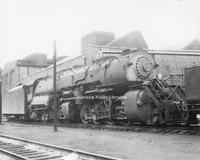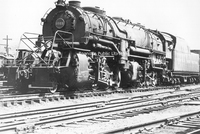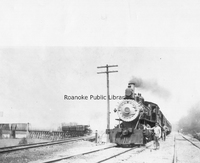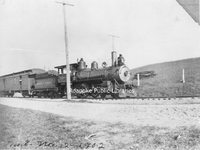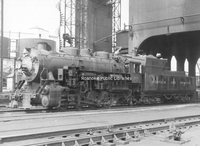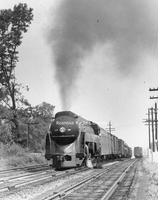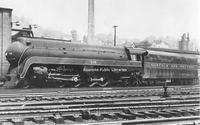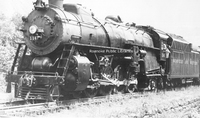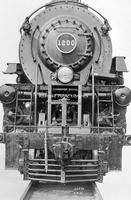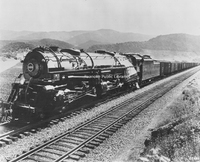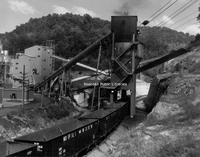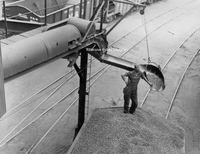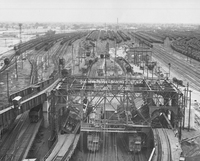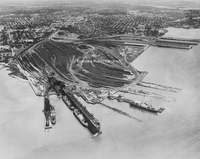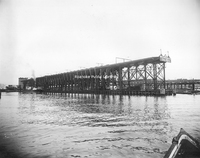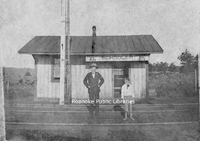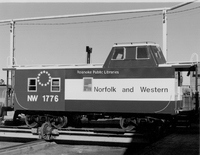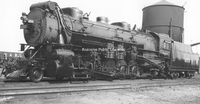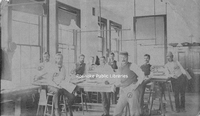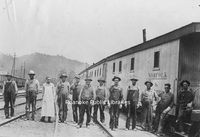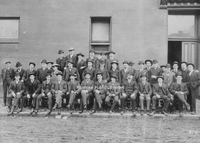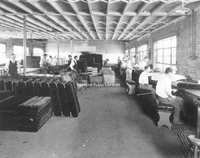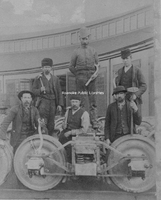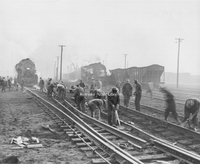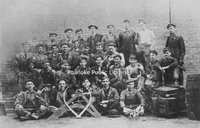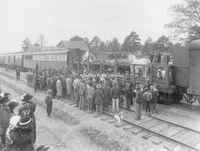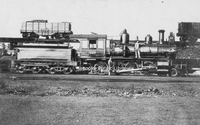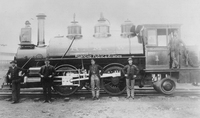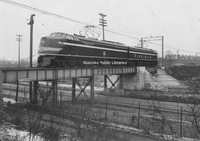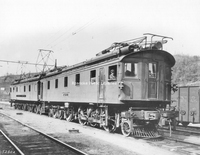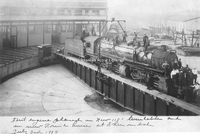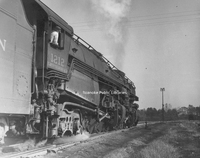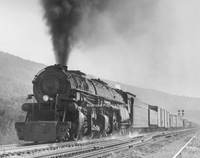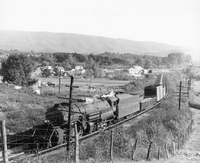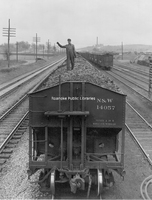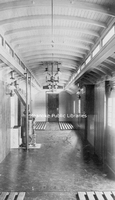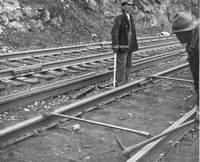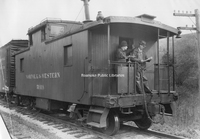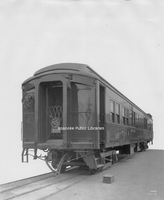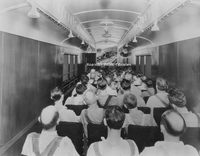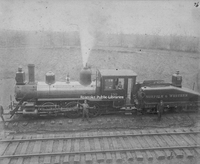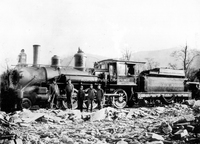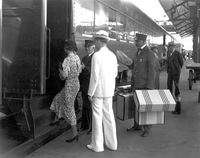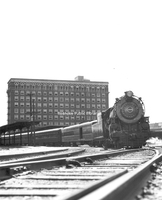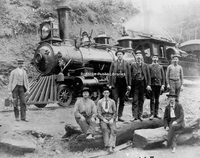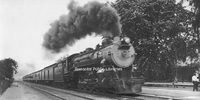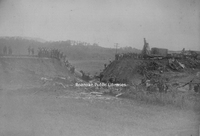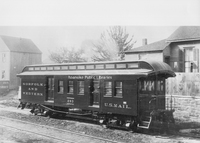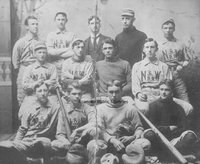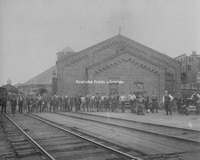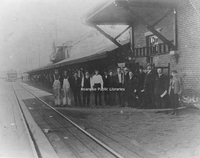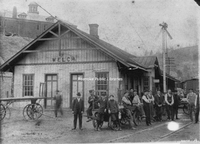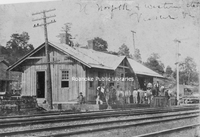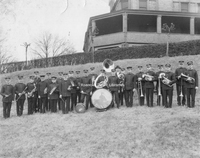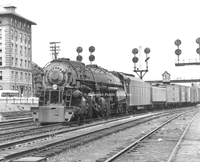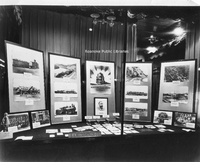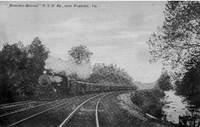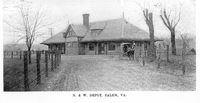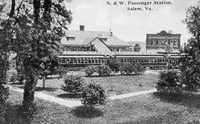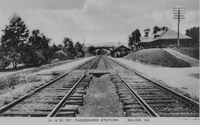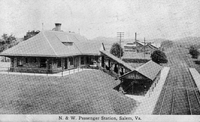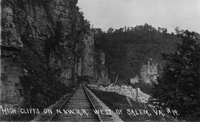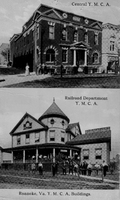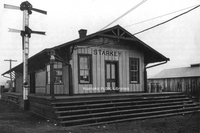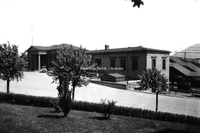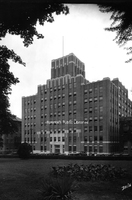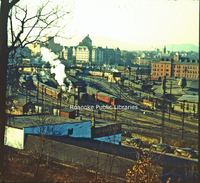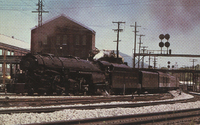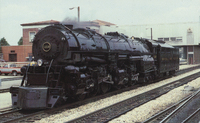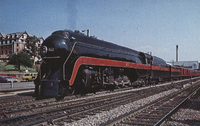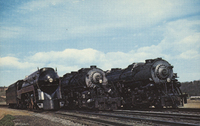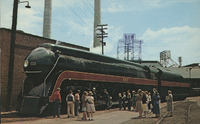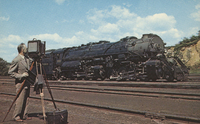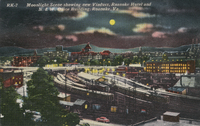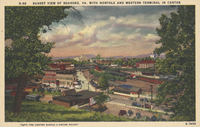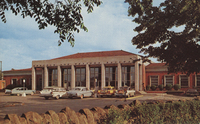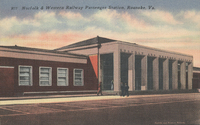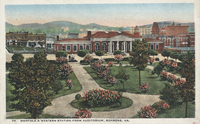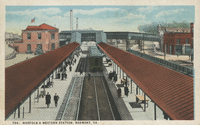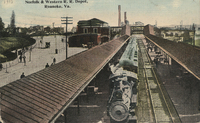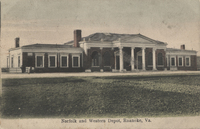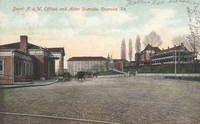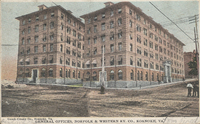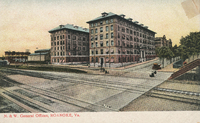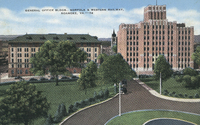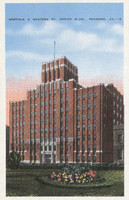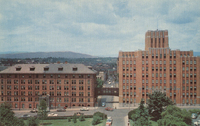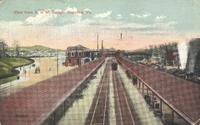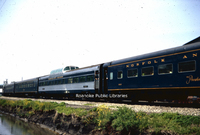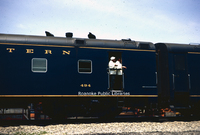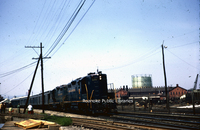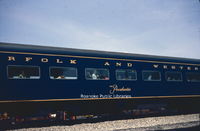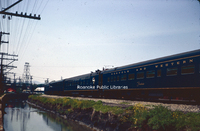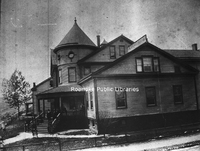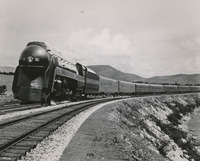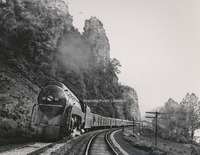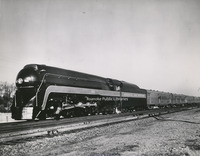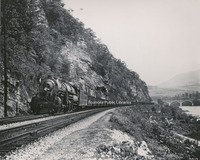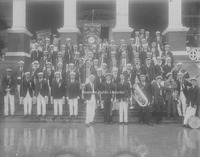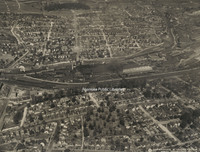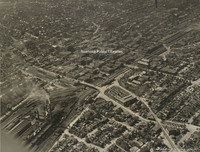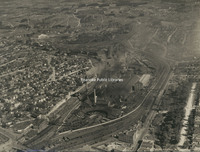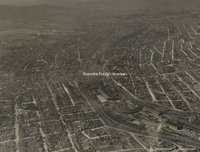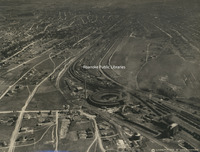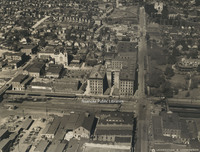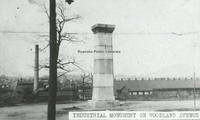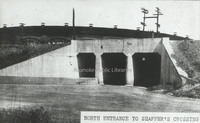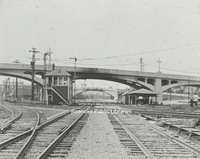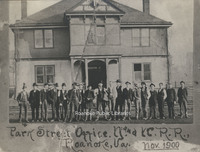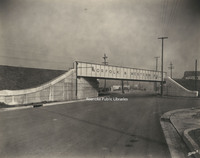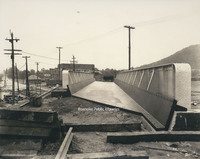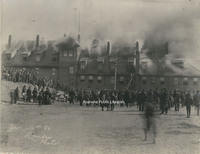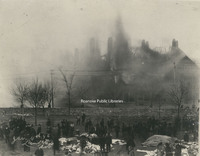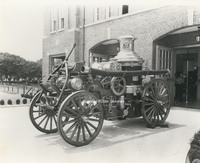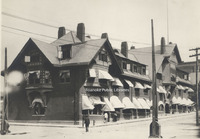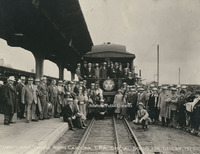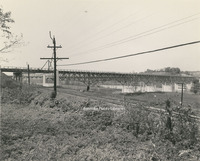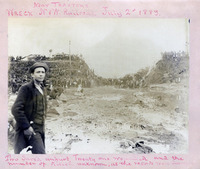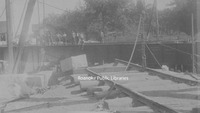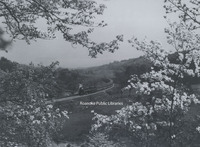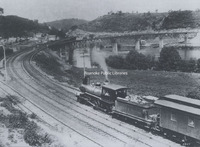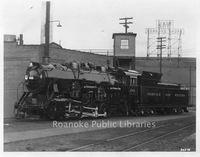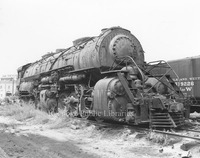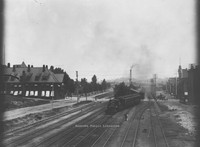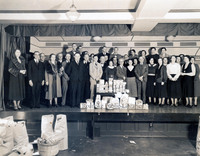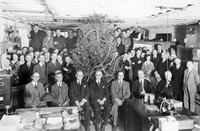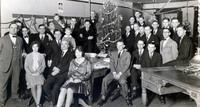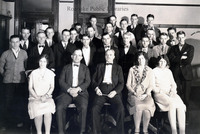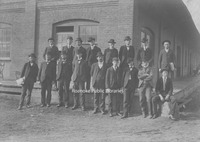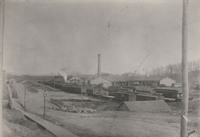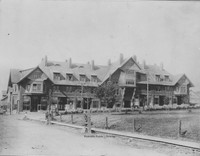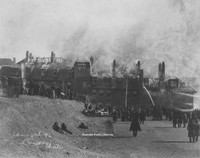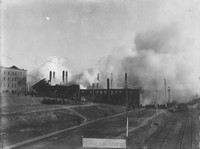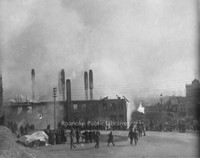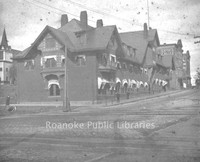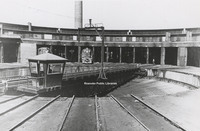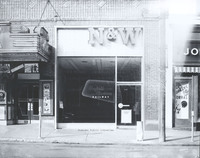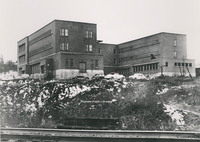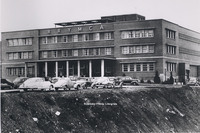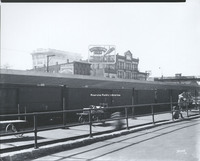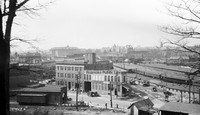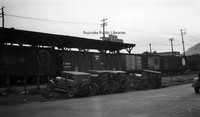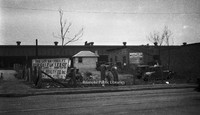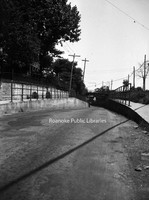Browse Items (294 total)
- Tags: Norfolk & Western
UCT32
RVNH40433 N&W Band
RVNH40423 Blue Cross
Tags: Blue Cross, employees, N&W, Norfolk & Western
RVNH40422 Wheel Rollers
RVNH40420 N&W Radio Production
Tags: Ed Skotch, J.L. Ramsey, N&W, Norfolk & Western, Phillips Briggs, Tom Slater, WSLS
RVNH40414 War Bond Rally
Tags: N&W, Norfolk & Western, war bonds
RVNH40411 N&W Veterans
RVNH40407 N&W Shops
RVNH40406 116th Infantry
Tags: 116th Infantry, 23rd Battalion, Marines, N&W, Norfolk & Western
RNRV41 N&W Employees
Tags: employees, N&W, Norfolk & Western
FE236 N&W Shops
FE162 N&W General Offices
FE120 N&W General Offices
RRHA479
RRHA478
RRHA477
HNWR202
Tags: locomotives, N&W, Norfolk & Western, steam engines, trains
HNWR199
Tags: coal, coal hoppers, coal tipples, freight cars, N&W, Norfolk & Western
HNWR198
HNWR197
Tags: coal, coal hoppers, freight cars, N&W, Norfolk & Western, railyards
HNWR196
Tags: coal, Engine 2146, freight cars, locomotives, N&W, Norfolk & Western, steam engines, trains
HNWR195
HNWR194
HNWR193
Tags: Engine 131, hoists, locomotives, N&W, Norfolk & Western, railyards, trains
HNWR192
HNWR191
Tags: Engine 550, locomotives, N&W, Norfolk & Western, steam engines, trains
HNWR189
Tags: auctions, freight cars, N&W, Norfolk & Western, platform cars, trains
HNWR187
HNWR186
Tags: cargo ships, coal, coal piers, N&W, Norfolk & Western
HNWR185
Tags: cargo ships, coal, coal cars, freight cars, N&W, Norfolk & Western, SS Carl Fritzen
HNWR184
Tags: cargo ships, coal, Lambert's Point, N&W, Norfolk & Western
HNWR183
HNWR182
HNWR180
HNWR179
HNWR178
Tags: express cars, freight cars, N&W, Norfolk & Western, trains
HNWR177
Tags: freight cars, locomotives, N&W, Norfolk & Western, trains
HNWR176
HNWR175
HNWR174
HNWR173
HNWR172
HNWR170
HNWR168
HNWR167
HNWR166
Tags: Class W, Engine 839, locomotives, N&W, Norfolk & Western, steam engines, trains
HNWR165
HNWR164
Tags: Bluefield Yard, N&W, Norfolk & Western, railyards
HNWR163
Tags: coal, freight cars, N&W, Norfolk & Western, Portsmouth Ohio
HNWR162
Tags: coal, coal mines, freight cars, Gary West Virginia, N&W, Norfolk & Western, trains
HNWR161
HNWR160
Tags: employees, N&W, Norfolk & Western, railroads
HNWR159
HNWR158
HNWR155
Tags: depots, N&W, Norfolk & Western, Salem, train stations
HNWR154
HNWR153
Tags: Bellevue Yard, N&W, Norfolk & Western, railroads, railyards
HNWR152
HNWR151
HNWR150
HNWR149
Tags: employees, Engine 264, locomotives, N&W, Norfolk & Western, steam engines, trains
HNWR148
HNWR147
Tags: employees, freight stations, N&W, Norfolk & Western
HNWR146
Tags: coal, employees, Kimball West Virginia, N&W, Norfolk & Western, yardmen
HNWR145
HNWR144
HNWR143
HNWR142
Tags: depots, Grundy, N&W, Norfolk & Western, train stations
HNWR141
HNWR140
Tags: coal yards, locomotives, N&W, Norfolk & Western, trains
HNWR139
HNWR138
HNWR137
Tags: freight docks, Lambert's Point, N&W, Norfolk & Western
HNWR136
HNWR135
Tags: mail cars, N&W, Norfolk & Western, trains
HNWR134
Tags: dynamometers, N&W, Norfolk & Western, trains
HNWR133
HNWR131
HNWR129
HNWR128
HNWR127
HNWR126
HNWR125
Tags: erecting shops, locomotives, N&W, Norfolk & Western, trains
HNWR124
HNWR123
Tags: depots, N&W, Norfolk & Western, soldiers, train stations, World War II
HNWR122
Tags: Christiansburg, depots, N&W, Norfolk & Western, train stations
HNWR121
HNWR120
HNWR119
HNWR116
Tags: Class A, Class J, Class Y, Engine 1203, Engine 2123, Engine 600, locomotives, N&W, Norfolk & Western, steam engines, trains
HNWR115
HNWR114
HNWR113
HNWR112
HNWR111
Tags: diesel engines, Engine 1590, locomotives, N&W, Norfolk & Western, trains
HNWR110
HNWR109
Tags: Engine 173, locomotives, N&W, Norfolk & Western, Radford, Radford Pipe Yard, trains
HNWR108
Tags: blacksmiths, employees, N&W, Norfolk & Western
HNWR107
Tags: coal, Engine 53, locomotives, N&W, Norfolk & Western, trains
HNWR105
Tags: employees, N&W, Norfolk & Western
HNWR104
HNWR102
HNWR101
HNWR100
Tags: accidents, Engine 43, locomotives, N&W, Norfolk & Western, Thaxton, train wrecks, trains
HNWR099
Tags: accidents, Engine 481, locomotives, N&W, Norfolk & Western, train wrecks, trains
HNWR098
Tags: locomotives, N&W, Norfolk & Western, Pocahontas, Powhatan Arrow, trains
HNWR097
Tags: Engine 475, locomotives, N&W, Norfolk & Western, steam engines, trains
HNWR096
HNWR095
Tags: N&W, Norfolk & Western, passenger cars, Powhatan Arrow, trains
HNWR094
HNWR093
Tags: N&W, Norfolk & Western, Powhatan Arrow, trains
HNWR091
Tags: N&W, Norfolk & Western, snow
HNWR090
Tags: Class M, Engine 1100, locomotives, N&W, Norfolk & Western, trains
HNWR089
Tags: Engine 20, locomotives, N&W, Norfolk & Western, trains
HNWR088
HNWR087
Tags: diesel engines, Engine 1645, locomotives, N&W, Norfolk & Western, trains
HNWR086
Tags: diesel engines, Engine 8511, locomotives, N&W, Norfolk & Western, trains
HNWR085
Tags: diesel engines, Engine 1633, locomotives, N&W, Norfolk & Western, trains
HNWR084
Tags: electric engines, Engine 2512, locomotives, N&W, Norfolk & Western, trains
HNWR083
HNWR082
HNWR081
Tags: employees, Henry Fink, N&W, Norfolk & Western
HNWR080
HNWR079
Tags: ambulances, N&W, Norfolk & Western
HNWR078
Tags: N&W, Norfolk & Western, trains
HNWR077
Tags: employees, Engine 600, locomotives, N&W, Norfolk & Western, trains
HNWR076
HNWR075
Tags: floats, N&W, Norfolk & Western, parades, Union Local 440
HNWR074
HNWr073
HNWR072
Tags: Class Z, Engine 1438, locomotives, N&W, Norfolk & Western, trains
HNWR071
Tags: Class Y, Engine 2200, locomotives, N&W, Norfolk & Western, trains
HNWR069
Tags: Class Y, Engine 2139, locomotives, N&W, Norfolk & Western, trains
HNWR068
Tags: Class Y, Engine 2087, locomotives, N&W, Norfolk & Western, trains
HNWR067
Tags: Class Y, Engine 2058, locomotives, N&W, Norfolk & Western, trains
HNWR066
Tags: Class Y, Engine 2023, locomotives, N&W, Norfolk & Western, trains
HNWR065
Tags: Class W, Engine 800, locomotives, N&W, Norfolk & Western, trains
HNWR064
Tags: Class U, Engine 76, locomotives, N&W, Norfolk & Western, trains
HNWR063
Tags: Class N, Engine 37, locomotives, N&W, Norfolk & Western, trains
HNWR062
Tags: Class M, Engine 1112, locomotives, N&W, Norfolk & Western, trains
HNWR060
Tags: Class K, Engine 130, locomotives, N&W, Norfolk & Western, steam engines, trains
HNWR059
Tags: Class K, Engine 118, locomotives, N&W, Norfolk & Western, trains
HNWR058
Tags: Class K, Engine 114, locomotives, N&W, Norfolk & Western, trains
HNWR057
Tags: Class A, Engine 1200, locomotives, N&W, Norfolk & Western, trains
HNWR056
Tags: Class A, Engine 1200, locomotives, N&W, Norfolk & Western, trains
HNWR055
Tags: coal, coal tipples, hoppers, N&W, Norfolk & Western, trains
HNWR054
Tags: coal, employees, hoppers, N&W, Norfolk & Western
HNWR053
Tags: coal, Coal Pier 4, coal piers, hoppers, Lambert's Point, N&W, Norfolk & Western
HNWR052
Tags: coal, coal piers, Lambert's Point, N&W, Norfolk & Western
HNWR051
Tags: coal, Coal Pier 4, coal piers, Lambert's Point, N&W, Norfolk & Western
HNWR049
Tags: depots, employees, N&W, Norfolk & Western, Schooler, train stations, W.H. Cord, W.H. Kegley
HNWR048
Tags: advertising, N&W, Norfolk & Western
HNWR046
Tags: cabooses, N&W, Norfolk & Western, trains
HNWR045
HNWR044
HNWR043
HNWR042
HNWR041
Tags: B.I. Wade, C.G. Fridinger, E.F. Horgan, E.S. Kaetzel, Ed Roderick, Edgar Davis, Edward Irvin, employees, F.E. Fetterman, F.H. Wigmore, F.L. Pitzer, F.L. Zeone, Frank Bianchi, G.H. Hann, George Leisinger, H.H. Lawhorn, Ike Neff, J.F. Horton, J.L. McDonald, J.T. Withers, James Conway, John Griffin, John Smith, L.L. Hough, Louis Litsinger, Mike Fitzgerald, N&W, Norfolk & Western, Oren Ruefly, P.E. Lawhorn, Paul Wiegland, Pete Conway, Roanoke Boiler Shop, T.D Equi, T.J. Murray, Thomas Dugan, W.A. Kimmerling, W.D. Cassidy, W.E. Drabble, W.F. Dupree, W.G. Hardy, William Hough
HNWR040
Tags: employees, N&W, Norfolk & Western, upholsterers
HNWR039
Tags: employees, N&W, Norfolk & Western
HNWR038
Tags: employees, N&W, Norfolk & Western, railroads, tracks
HNWR037
Tags: apprentices, employees, N&W, Norfolk & Western
HNWR036
Tags: auctions, farm trains, livestock, N&W, Norfolk & Western, trains
HNWR035
Tags: A.D. Lane, employees, Engine 345, Julian Hark, locomotives, N&W, Norfolk & Western, trains
HNWR034
HNWR033
HNWR032
HNWR031
Tags: Engine 1442, locomotives, N&W, Norfolk & Western, roundhouses, trains
HNWR030
Tags: Engine 1212, locomotives, N&W, Norfolk & Western, steam engines, trains
HNWR029
Tags: Engine 1228, locomotives, N&W, Norfolk & Western, trains
HNWR028
Tags: Engine 2165, locomotives, N&W, Norfolk & Western, railroads, trains
HNWR026
HNWR025
Tags: boxcars, N&W, Norfolk & Western, trains
HNWR024
Tags: baggage cars, express cars, N&W, Norfolk & Western, trains
HNWR023
Tags: employees, N&W, Norfolk & Western, railroads
HNWR022
Tags: cabooses, N&W, Norfolk & Western, trains
HNWR021
Tags: boxcars, N&W, Norfolk & Western, railroads, trains
HNWR020
Tags: employees, N&W, Norfolk & Western, trains
HNWR019
Tags: Charlie Roby, employees, Engine 138, locomotives, N&W, Norfolk & Western, Radford, railroads, trains
HNWR016
HNWR014
HNWR013
Tags: N&W, Norfolk & Western, railroads, trains
HNWR012
Tags: Engine 500, locomotives, N&W, Norfolk & Western, Pocahontas, railroads, trains
HNWR011
HNWR010
Tags: locomotives, N&W, Norfolk & Western, railroads, steam engines, trains
HNWR009
Tags: accidents, James Cassell, N&W, Norfolk & Western, railroads, Thaxton, train wrecks, trains
HNWR008
Tags: mail cars, N&W, Norfolk & Western, Rail Post Office, railroads
HNWR007
HNWR006
Tags: employees, Lynchburg, N&W, Norfolk & Western, railroads
HNWR005
HNWR004
Tags: depots, N&W, Norfolk & Western, railroads, train stations, Welch, West Virginia
HNWR003
Tags: depots, Montgomery County, N&W, Norfolk & Western, railroads, train stations, trains, Vicker
HNWR002
HNWR001
Tags: Class A 1219, locomotives, N&W, Norfolk & Western, trains
SHH003 N&W Display
SR180 Memphis Special
Tags: locomotives, Memphis Special, N&W, Norfolk & Western, railroads, trains
SR113 N&W Passenger Station
SR112 N&W Passenger Station
SR111 N&W Passenger Station
SR110 N&W Passenger Station
SR046 High Cliffs
Tags: N&W, Norfolk & Western, railroads
SR010 YMCA
BM 343 Starkey Station
Davis 61.01 N&W Passenger Station
Davis 43.214 N&W General Offices
PC 122.151 Locomotive No. 1218
Tags: Class A 1218, locomotives, N&W, Norfolk & Western, trains
PC 122.15 Locomotive No. 1218
Tags: Class A 1218, locomotives, N&W, Norfolk & Western, trains
PC 112.13 N&W 611
Tags: Class J 611, locomotives, N&W, Norfolk & Western, Old 611, trains
PC 122.12 N&W Engines
Tags: locomotives, N&W, Norfolk & Western, trains
PC 122.11 Engine No. 603 Class J
PC 122.10 Engine No. 2171
Tags: Engine No. 2171, locomotives, N&W, Norfolk & Western, trains
PC 122.8 N&W Buildings
Tags: N&W, Norfolk & Western, railroads
PC 122.7 N&W Terminal
Tags: N&W, Norfolk & Western, railroads
PC 122.51 N&W Passenger Station
PC 122.5 N&W Passenger Station
PC 122.4 N&W Depot
PC 122.3 Norfolk & Western Station
PC 122.22 Norfolk & Western Depot
PC 122.2 Norfolk & Western Depot
PC 112.1 N&W Depot
PC 112.04 General Offices
PC 112.03 General Offices
PC 122.02 General Offices
PC 122.01 General Offices
PC 122.0 General Offices
Scyphers28 Pocahontas
Tags: N&W, Norfolk & Western, passenger cars, Pocahontas, railroads, trains
Scyphers26 Pocahontas
Tags: N&W, Norfolk & Western, passenger cars, Pocahontas, railroads, trains
Scyphers23 N&W GP9
Scyphers21 Pocahontas
Tags: N&W, Norfolk & Western, passenger cars, Pocahontas, railroads, trains
Scyphers20 Pocahontas
Tags: N&W, Norfolk & Western, passenger cars, Pocahontas, railroads, trains
Davis2 19.11 YMCA
MP 27.3 Engine 609
Tags: Engine 609, locomotives, N&W, Norfolk & Western, railroads, trains
MP 27.2 Engine 604
Tags: Engine 604, locomotives, N&W, Norfolk & Western, railroads, trains
MP 27.1 Engine 601
Tags: Engine 601, locomotives, N&W, Norfolk & Western, railroads, trains
MP 27.0 Engine 2151
Tags: Engine 2151, locomotives, N&W, Norfolk & Western, railroads, trains
MP 26.0 Equipment Painters
Underwood 6 N&W Shops
Underwood 3 Downtown Looking Southwest
Underwood 26 N&W Shops
Underwood 2 Roanoke Looking West
Underwood 19 N&W Yards
Underwood 14 N&W Offices
Davis GL 57 Mayors Momument
Davis GL 242 Shaffers Crossing
Tags: N&W, Norfolk & Western, Northwest, railroads, Shaffer's Crossing
Davis GL 237 Walnut Avenue Bridge
Tags: bridges, Jefferson Street, N&W, Norfolk & Western, railroads, Southeast, tracks, Walnut Avenue
Davis2 43.214 N&W Offices
Davis 66.811 Franklin Road RW Bridge
Tags: bridges, Franklin Road, N&W, Norfolk & Western, railroads, trestles
Davis 66.81 Franklin Road RW Bridge
Tags: bridges, construction, Franklin Road, N&W, Norfolk & Western, railroads
Davis 65.941 Norfolk and Western Office Fire
Davis 65.94 Norfolk and Western Office Fire
Davis 65.86 Steamer #2
Davis 61d N&W General Offices
Davis 61b N&W Rails
Davis 61a N&W Rails
Davis 61.71 Thaxton Train Wreck
Tags: accidents, Bedford County, N&W, Norfolk & Western, railroads, Thaxton, train wrecks, trains
Davis 61.31 N&W Bridge Construction
Davis 61.24 Powhatan Arrow #4
Tags: locomotives, N&W, Norfolk & Western, Powhatan Arrow, railroads, trains
Davis 61.23 N&W Class N Locomotive
Tags: Class N, locomotives, N&W, Norfolk & Western, Radford, railroads, trains
Davis 61.22 N&W Class S1A #244
Tags: Class S1A, locomotives, N&W, Norfolk & Western, railroads, steam engines, trains
Davis 61.2 NW Class Y6b #2189
Davis 61.11 N&W Railroad
Davis 55.62f Norfolk & Western Play
Tags: Domino Cane Sugar, employees, Melrose Ham, N&W, Norfolk & Western, plays
Davis 55.62e Norfolk & Western Play
Tags: blackface, N&W, Norfolk & Western, plays, trains
Davis 55.62c Norfolk & Western Play
Tags: blackface, N&W, Norfolk & Western, plays, trains
Davis 55.62b Norfolk & Western Employees
Tags: employees, N&W, Norfolk & Western
Davis 55.62a Norfolk & Western Employees
Tags: employees, N&W, Norfolk & Western
Davis 55.33 N&W Freight Station Employees
Davis 45 Roanoke Machine Works
Davis 43.213 N&W General Offices
Davis 43.212 N&W General Offices Fire
Davis 43.211 Norfolk & Western Office Fires
Davis 43.21 Norfolk & Western Office Fire
Davis2 43.2-1 N&W Regional Office
Davis2 30.1u Shaffers Crossing Roundhouse
Tags: locomotives, N&W, Norfolk & Western, Northwest, Shaffer's Crossing, trains
Davis 2.112 N&W Office
Tags: Jefferson Street, N&W, Norfolk & Western, offices
Davis 19b RRYMCA
Davis 19a RRYMCA
Davis 1.822 N&W freight station
Tags: depots, hotels, motels, N&W, Norfolk & Western, St. James Hotel, trains
RNC 8 Wilson & Company
RNC 3 N&W Salvage
Tags: Campbell Avenue, cars, N&W, Norfolk & Western, trains, warehouses
RNC 39 N&W Freight Station
RNC 73 N&W Underpass
Tags: bridges, N&W, Norfolk & Western, trestles
